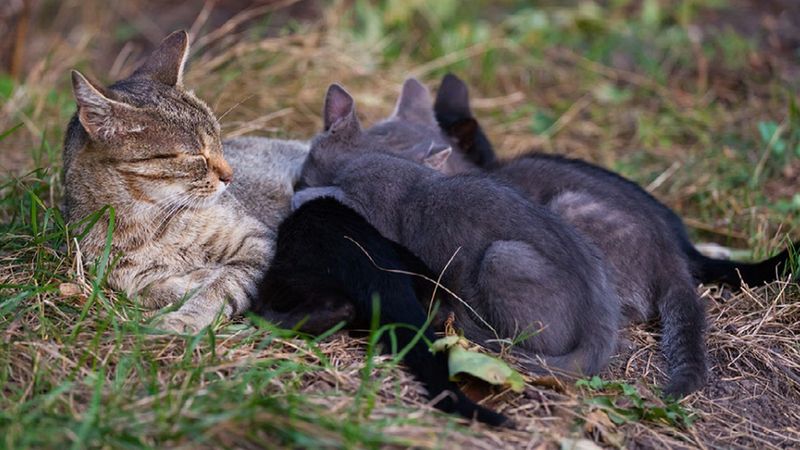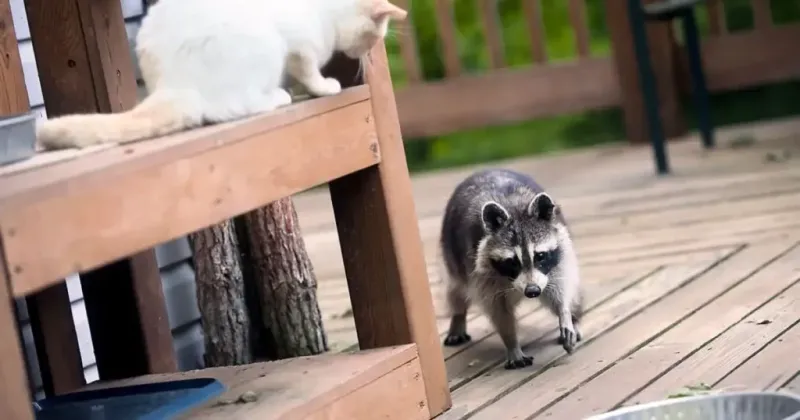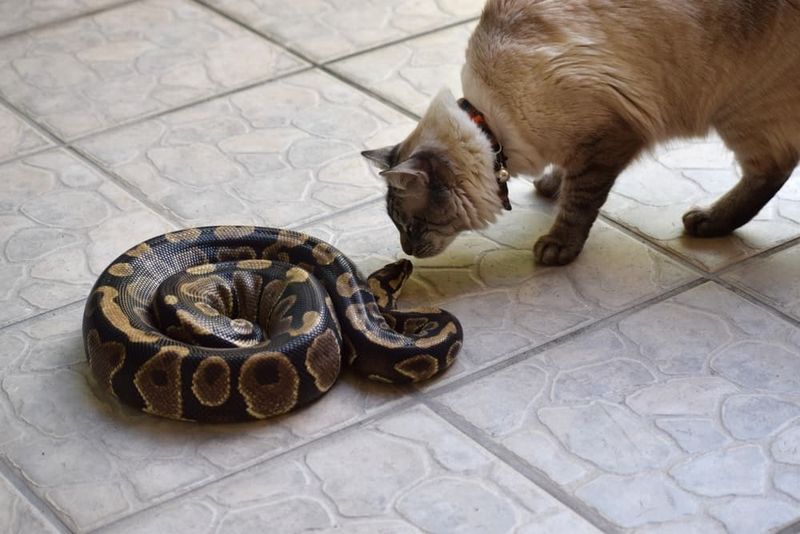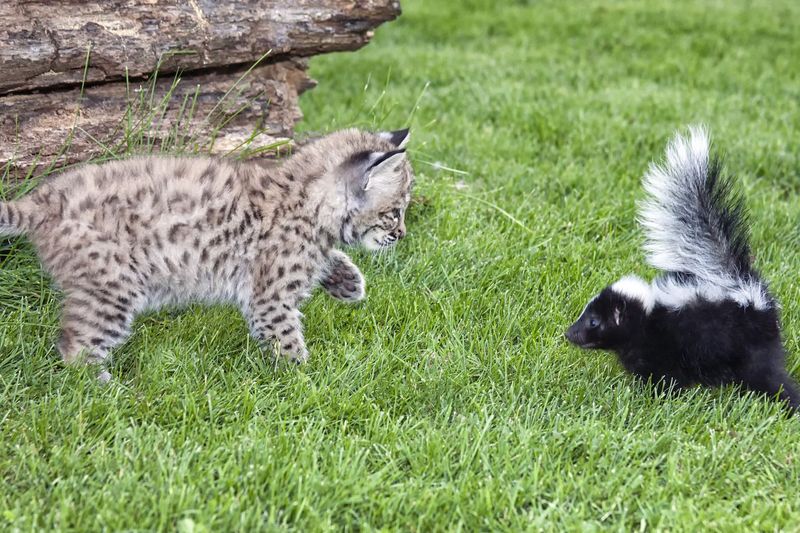📖 Table of Content:
Allowing a cat to roam in the backyard may appear safe, especially in familiar surroundings. However, even well-kept outdoor spaces can hide unseen hazards. The presence of other animals can turn a peaceful yard into a dangerous zone.
From territorial wildlife to stray pets, many backyard visitors are capable of harming a cat. Some may attack directly, while others carry parasites or diseases that spread through contact. These encounters often happen quickly and without warning.
Recognizing the risks lurking just beyond the door is essential. Preventing unwanted interactions starts with awareness and precaution. A secure environment can make all the difference in keeping a cat safe outdoors.
1. Coyotes
Coyotes have expanded their territory into suburban and urban areas, making them a real threat to outdoor cats. These clever predators view cats as prey and will actively hunt them, especially during dawn and dusk hours when coyotes are most active. A single coyote can easily overpower even the most agile cat.
What makes them particularly dangerous is their hunting technique – they’re patient, stealthy, and lightning-quick when they strike. Coyote attacks typically result in fatal injuries. To protect your cat, never leave them outside unattended, especially during early morning or evening hours. Consider building a catio or installing coyote rollers on fences if you live in an area where these predators are common.
2. Raccoons
Don’t be fooled by their cute, bandit-like appearance. Raccoons can inflict serious damage on cats with their sharp claws and powerful bite. These nocturnal creatures become particularly aggressive when they feel cornered or when protecting their young. Raccoons carry various diseases transmissible to cats, including rabies, leptospirosis, and roundworms.
The injuries from raccoon attacks often become infected due to the bacteria present in their mouth and under their claws. Food is a major attractant for raccoons, so never leave pet food outside overnight. Secure your trash cans and eliminate other potential food sources that might draw these masked visitors into your yard where they could encounter your cat.
3. Owls
Great horned owls and other large owl species view small cats as potential prey. These powerful birds swoop down silently from above, using their sharp talons to grab unsuspecting victims. Their hunting strategy gives cats virtually no warning before an attack occurs. Cats weighing under 15 pounds are particularly vulnerable to owl predation.
The initial attack from an owl’s talons can cause puncture wounds, but even more concerning is that owls can actually carry small cats away. Keep cats indoors during prime owl hunting hours (dusk to dawn). If your cat must be outside, provide sheltered areas where they can quickly hide from aerial threats and stay in well-lit areas that owls tend to avoid.
4. Venomous Snakes
Curious by nature, cats tend to explore snakes, which can lead to dangerous bites. Depending on where you live, species like rattlesnakes, copperheads, or coral snakes might be lurking in your yard, especially around tall grass or piles of wood and rocks. Snake venom acts swiftly in cats, causing intense pain, swelling, difficulty breathing, and potential tissue damage.
Without immediate veterinary care, snake bites can be fatal to cats. Keep grass short and remove debris piles where snakes might hide. Consider snake-proofing your yard with fine mesh fencing that extends several inches below ground. Always check your yard before letting your cat out, especially during warmer months when snakes are most active.
5. Hawks
Red-tailed hawks and other large raptors present a serious threat to cats, especially kittens and smaller adults. Unlike owls, hawks hunt during daylight hours, using their exceptional vision to spot prey from high above before diving at speeds up to 120 mph. A hawk’s attack typically causes puncture wounds from their sharp talons, which can lead to serious infection or internal injuries.
Hawks have been known to carry off cats weighing up to 6-8 pounds, though they more commonly attack smaller animals. Provide overhead protection in your yard, such as awnings, pergolas, or dense tree cover. Always supervise smaller cats outdoors, especially in open areas where hawks have a clear line of sight and easy access for attack.
6. Aggressive Dogs
Loose or poorly controlled neighborhood dogs pose one of the most common threats to outdoor cats. Even normally friendly dogs may give chase due to their prey drive, potentially causing severe injuries or death to cats caught in the pursuit. Dog attacks frequently result in crush injuries, puncture wounds, and internal damage.
The bacteria in a dog’s mouth can lead to serious infections even from minor bite wounds. Cats who survive dog attacks often suffer from long-term trauma and fear. Know which neighbors have dogs and their walking schedules. Provide escape routes in your yard like cat-accessible high perches or small openings in fences that cats can use but dogs cannot. Report roaming dogs to animal control to protect not just your cat but others in the neighborhood.
7. Skunks
While skunks don’t usually hunt cats, their defensive spray poses significant health risks. When threatened, skunks release a powerful chemical that can temporarily blind cats and cause severe respiratory distress, nausea, and confusion. The spray’s chemicals can irritate a cat’s eyes and mucous membranes, potentially leading to corneal damage.
If ingested during grooming, these compounds may cause vomiting and temporary neurological symptoms. Cats with pre-existing respiratory conditions are at particular risk. Eliminate potential skunk den sites like spaces under decks or sheds. Motion-activated lights can deter nocturnal skunk visitors. If your cat is sprayed, don’t use water initially as it spreads the oils – use a specialized skunk odor remover and seek veterinary care for eye or respiratory issues.







